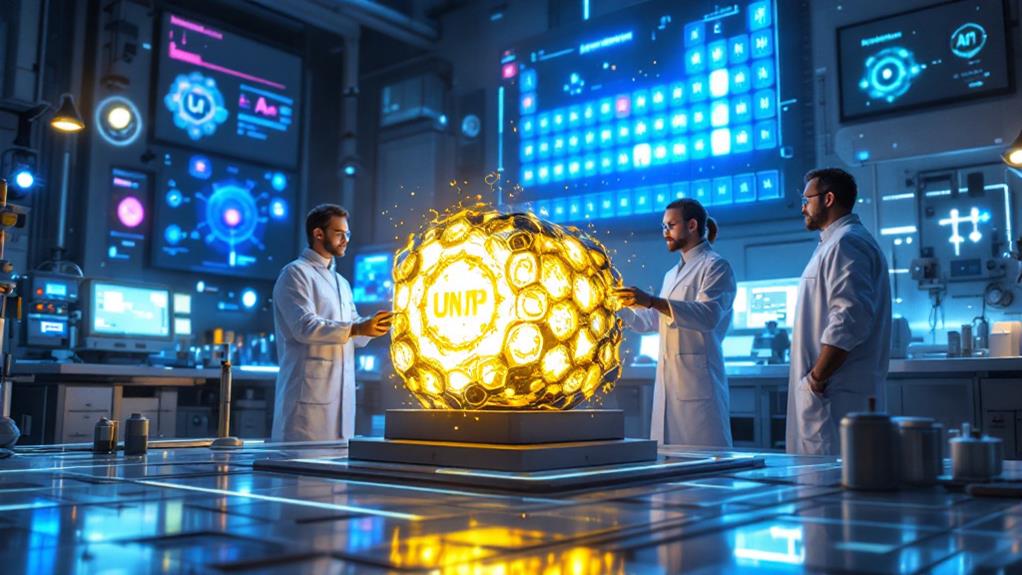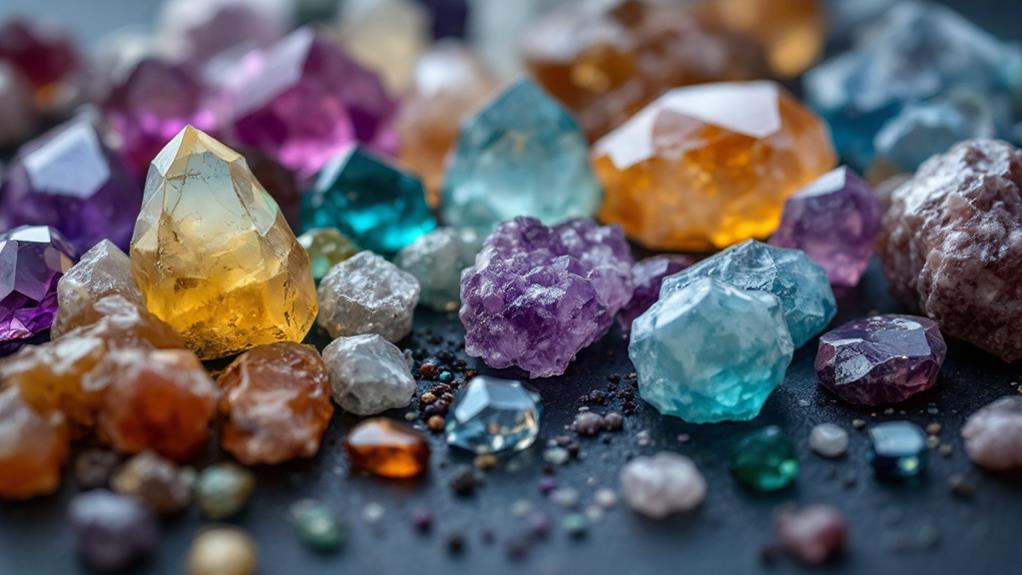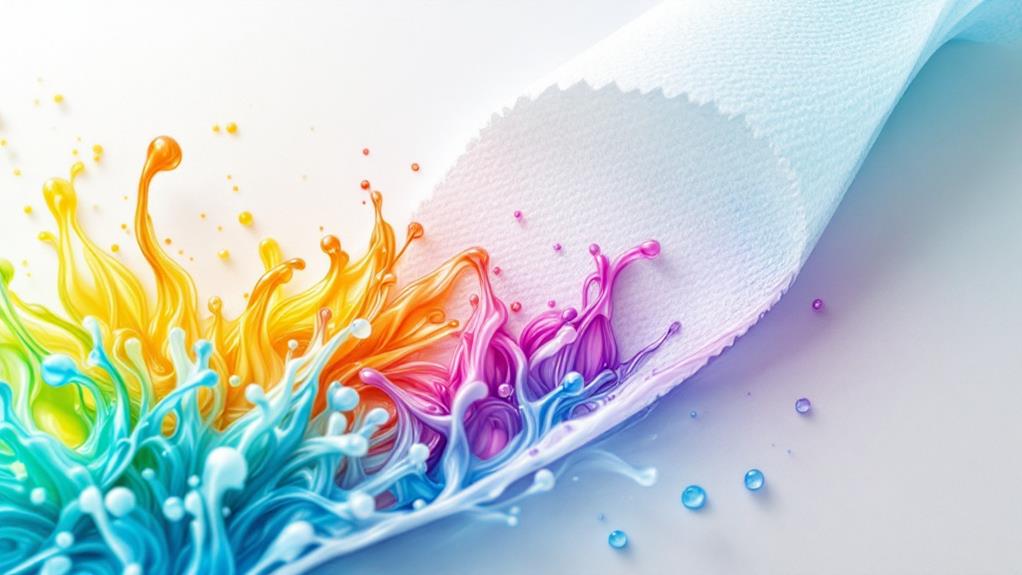What Is Vulcanization? The Process Behind Rubber’s Strength
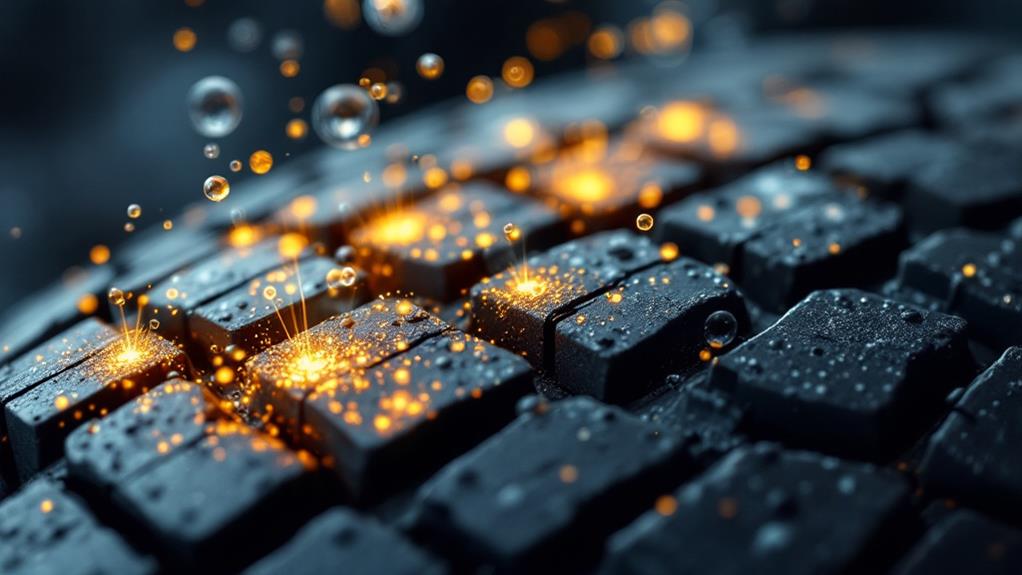
Vulcanization is a chemical process that modifies soft, sticky natural rubber into a durable, elastic material. It involves heating rubber with sulfur, creating cross-links between polymer chains. This strengthens the rubber, making it resistant to heat, cold, and wear. Discovered accidentally by Charles Goodyear in 1839, vulcanization revolutionized industry, enabling the production of tires, hoses, and countless other products. The process enhances rubber's strength, elasticity, and chemical resistance while reducing its susceptibility to temperature changes. Today, various vulcanization methods exist, each customized to specific applications. From automotive to healthcare, vulcanized rubber's versatility continues to shape our modern world. Exploring this transforming process discloses the science behind rubber's exceptional properties.
The History of Vulcanization
In the mid-19th century, Charles Goodyear stumbled upon a revolutionary process that would change the rubber industry forever. His accidental discovery of vulcanization in 1839 transformed rubber from a sticky, unstable substance into a durable material with countless applications.
Goodyear's discovery came after years of experimentation and financial struggles. He found that by heating rubber with sulfur, it became stronger, more elastic, and resistant to temperature changes. This essential breakthrough solved the major problems plaguing rubber products at the time, such as melting in hot weather and becoming brittle in cold conditions.
The vulcanization process quickly gained popularity, leading to rapid scientific advancements in rubber technology. It paved the way for the development of pneumatic tires, rubber hoses, and countless other products we now take for granted. Goodyear's innovation also sparked a surge in industrial growth, particularly in the automotive and manufacturing sectors.
Despite the immense impact of his revelation, Goodyear faced numerous patent battles and died in debt. However, his legacy lives on, with the Goodyear Tire and Rubber Company bearing his name and vulcanization remaining a key process in modern rubber production.
Understanding Raw Rubber
Before diving into vulcanization, it's crucial to understand the nature of raw rubber. Raw rubber comes from various natural rubber sources, with the most common being the latex sap of rubber trees. When you tap these trees, you'll collect a milky white fluid that's rich in rubber particles.
Raw rubber's chemical properties make it both useful and challenging to work with. It's primarily composed of long chains of cis-1,4-polyisoprene molecules, giving it its unique elasticity. However, this molecular structure also makes raw rubber highly susceptible to temperature changes. You'll find it becomes sticky and soft in warm conditions, while cold temperatures cause it to harden and lose flexibility.
Another key characteristic of raw rubber is its poor resistance to wear and tear. Without treatment, it'll quickly degrade when exposed to sunlight, oxygen, and various chemicals. It's also prone to cracking and breaking under stress. These limitations severely restrict raw rubber's practical applications, which is why the uncovering of vulcanization was so revolutionary. By understanding raw rubber's properties, you can better appreciate the transformative effect of the vulcanization process.
The Chemistry of Vulcanization
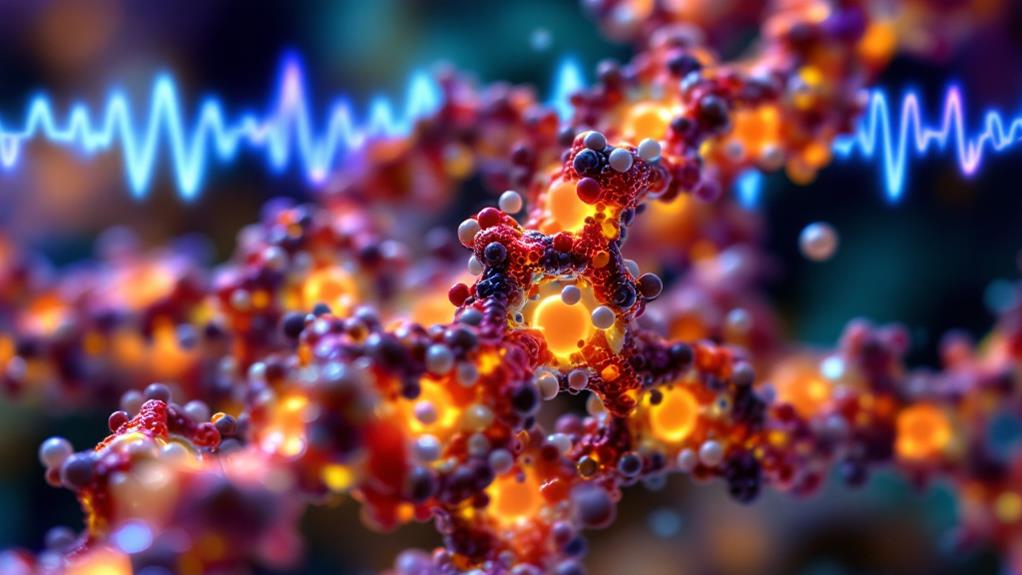
Vulcanization's core chemistry involves the formation of cross-links between polymer chains in rubber. This process fundamentally alters the molecular structure of raw rubber, transforming it from a soft, sticky substance into a durable, elastic material.
The key chemical reaction in vulcanization typically involves sulfur atoms. When you heat rubber with sulfur, the sulfur atoms form bridges between the long polymer chains of the rubber molecules. These bridges, or cross-links, connect the chains together, creating a three-dimensional network structure.
As the number of cross-links increases, you'll notice the rubber becoming stronger and more resistant to deformation. The exact properties of the vulcanized rubber depend on the degree of cross-linking, which you can control by adjusting the amount of sulfur and other additives used in the process.
It's important to understand that vulcanization isn't reversible. Once the chemical reactions have taken place, you can't return the rubber to its original state. This permanence is what makes vulcanized rubber so crucial for a wide range of applications, from tires to seals and gaskets.
Types of Vulcanization Processes
Several distinct vulcanization processes have submerged to meet diverse manufacturing needs and material requirements. You'll find that these processes can be broadly categorized into continuous and batch vulcanization methods.
Continuous vulcanization is ideal for high-volume production of long, uniform rubber products like hoses, cables, and belts. It's a non-stop process where the rubber compound moves through a heated chamber, allowing for consistent curing and increased efficiency. You'll often see this method in industries requiring large-scale production.
Batch vulcanization, on the other hand, is used for products with complex shapes or those requiring specific curing conditions. It involves curing rubber in individual molds or presses, offering more control over the process but at a slower rate.
Three common types of vulcanization processes:
- Compression molding
- Injection molding
- Autoclave curing
Each process has its advantages, and the choice depends on factors like product design, material properties, and production volume. Understanding these different vulcanization methods can help you select the most suitable technique for your rubber manufacturing needs, ensuring prime product quality and efficiency.
Properties of Vulcanized Rubber
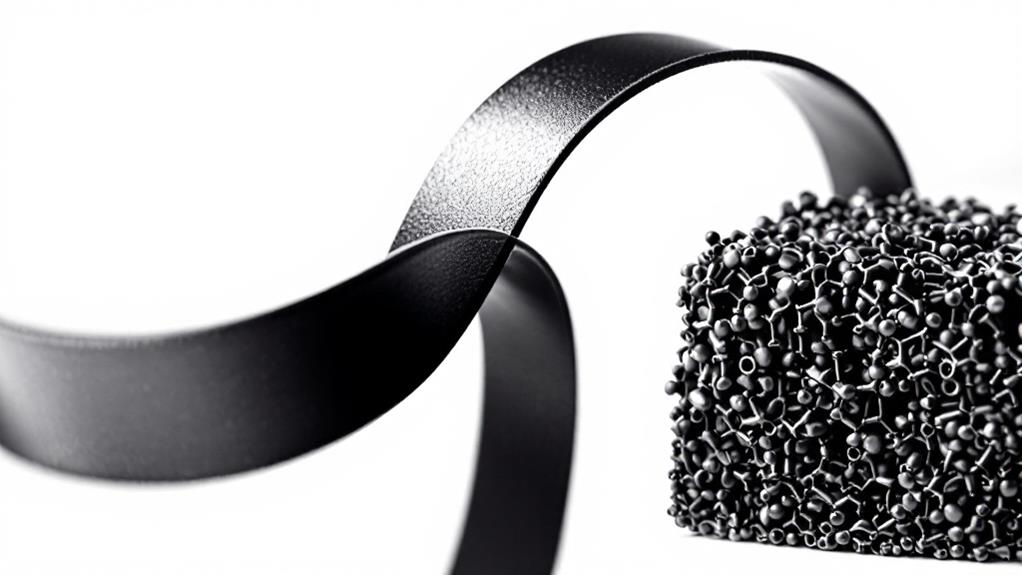
The properties of vulcanized rubber set it apart from its non-vulcanized counterpart, making it a versatile material for countless applications. When rubber undergoes vulcanization, it gains enhanced strength, elasticity, and durability. You'll notice that vulcanized rubber can withstand higher temperatures and resist deformation under stress.
One of the most significant improvements is its increased wear resistance. Vulcanized rubber can endure repeated friction and abrasion without breaking down quickly, making it ideal for tire treads and shoe soles. It also exhibits better chemical resistance, allowing it to maintain its integrity when exposed to oils, solvents, and other potentially harmful substances.
Another key property is its improved thermal conductivity. While rubber is generally an insulator, vulcanization can slightly increase its ability to conduct heat, which is beneficial in certain industrial applications. You'll also find that vulcanized rubber has a higher tensile strength, meaning it can withstand greater pulling forces before breaking. This property, combined with its enhanced elasticity, allows vulcanized rubber to return to its original shape after being stretched or compressed, making it perfect for applications like rubber bands and shock absorbers.
Applications in Modern Industry
From automotive to aerospace, vulcanized rubber finds its way into countless modern industries. You'll encounter this versatile material in everyday products like car tires, shoe soles, and hoses. Its resistance to heat, chemicals, and wear makes it indispensable in manufacturing processes and end-user applications.
Tire manufacturing is one of the largest consumers of vulcanized rubber. The process enhances the rubber's durability, ensuring your vehicle's tires can withstand various road conditions and temperatures. Beyond transportation, you'll find vulcanized rubber in:
- Industrial conveyor belts
- Electrical insulation
- Vibration dampening systems
The construction industry relies on vulcanized rubber for weatherproofing and sealing applications. In healthcare, it's used for surgical gloves and medical tubing. Even in sports, you'll see it in golf balls and tennis racket grips.
As environmental concerns grow, rubber recycling has become increasingly important. Vulcanized rubber can be ground into crumb rubber and repurposed for playground surfaces, athletic tracks, and road construction. This circular approach helps reduce waste and conserves resources, making vulcanization a key player in sustainable manufacturing practices.
Environmental Impact of Vulcanization
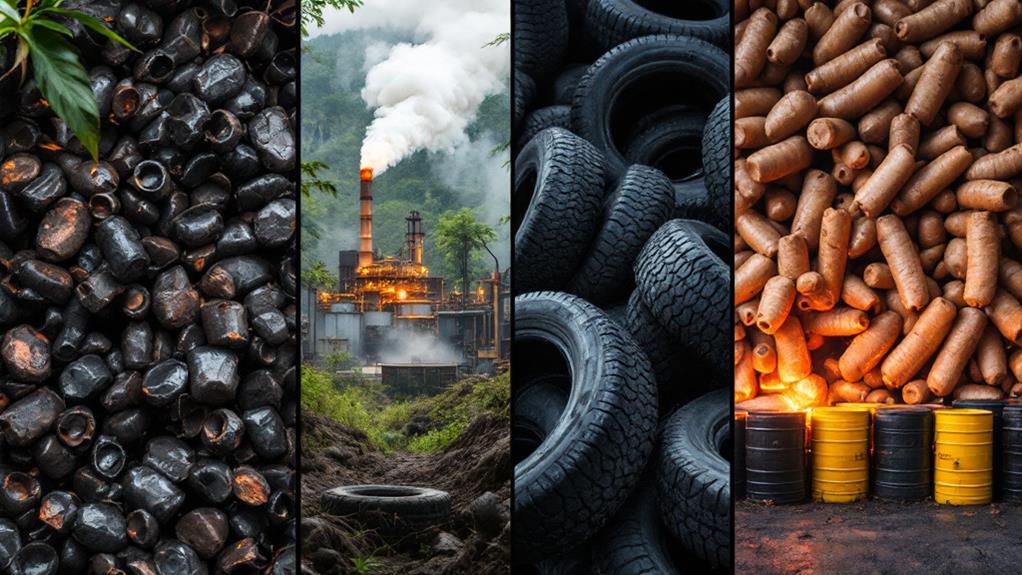
While vulcanization has revolutionized numerous industries, it's important to ponder its environmental implications. The process involves the use of sulfur and other chemicals, which can have negative effects on the environment if not properly managed. You'll find that waste products from vulcanization, including volatile organic compounds (VOCs) and particulate matter, can contribute to air pollution.
Water pollution is another concern, as chemicals used in the process may contaminate water sources if not properly treated. Additionally, the disposal of vulcanized rubber products presents challenges, as they don't easily biodegrade. This has led to increased focus on recycling and proper disposal methods.
Environmental regulations have been established to mitigate these impacts. You'll see that many companies are now required to implement emission control systems and waste management protocols. Sustainability considerations have also prompted research into alternative vulcanization methods and more eco-friendly additives.
As you investigate the world of vulcanized rubber, you'll notice a growing emphasis on developing greener processes and materials. This includes efforts to reduce energy consumption, minimize waste, and create more recyclable rubber products.
Alternatives to Traditional Vulcanization
In light of environmental concerns, researchers and industry professionals have been exploring alternatives to traditional vulcanization. These innovative approaches aim to reduce the environmental impact while maintaining or improving the quality of rubber products.
One promising alternative is the use of bio-based vulcanizing agents. These agents, derived from renewable sources, can replace traditional sulfur-based compounds. They're not only more environmentally friendly but can also enhance the properties of rubber in some applications.
Another approach is reduced emission vulcanization (REV). This process minimizes the release of harmful chemicals during the curing process, making it safer for workers and the environment. REV techniques often use lower temperatures and pressures, which can also lead to energy savings.
Here are three key benefits of alternative vulcanization methods:
- Lower carbon footprint
- Reduced exposure to harmful chemicals
- Potential for improved rubber properties
You'll find that these alternatives are gaining traction in various industries, from automotive to consumer goods. As research continues, you can expect to see more eco-friendly rubber products hitting the market, offering the same durability and performance you've come to expect from traditional vulcanized rubber.
Future Innovations in Rubber Technology
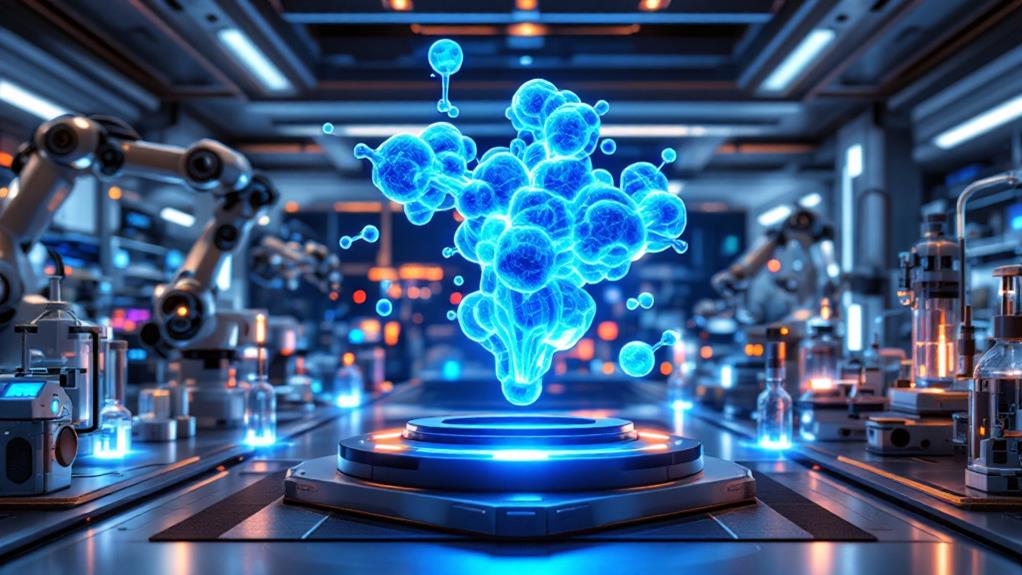
Rubber technology is on the cusp of a revolution. You'll soon see pioneering innovations that'll transform how we use and think about rubber. One of the most exciting developments is self-healing rubber. Imagine tires that can repair their own punctures or rubber seals that automatically close small cracks. This technology could drastically extend the lifespan of rubber products and reduce waste.
Another promising area is the development of recyclable rubber compounds. Traditional vulcanized rubber is notoriously difficult to recycle, but new formulations are changing that. You'll find rubber products that can be broken down and reprocessed multiple times without losing their essential properties. This advancement will have a massive impact on sustainability in industries ranging from automotive to consumer goods.
You should also keep an eye on smart rubber materials. These incorporate sensors or responsive elements, allowing rubber products to adapt to their environment or provide real-time data. From tires that adjust their grip based on road conditions to medical devices that monitor patient health, smart rubber will open up entirely new applications for this versatile material.
